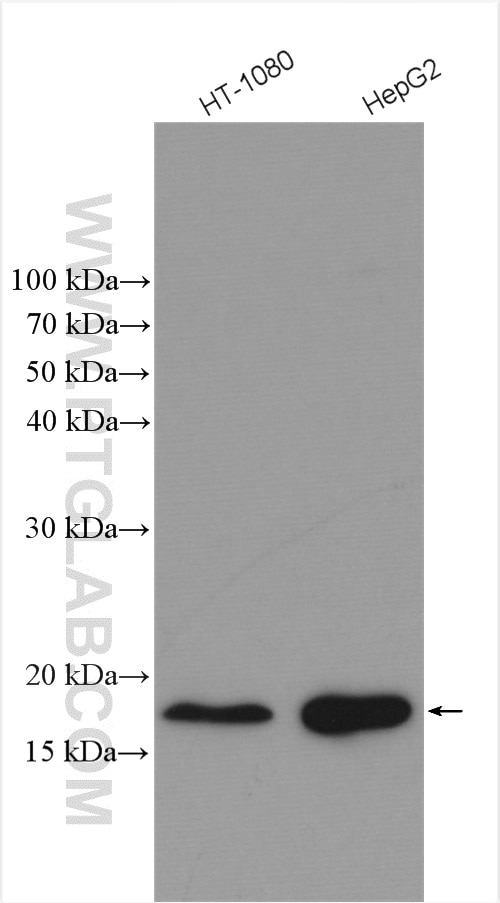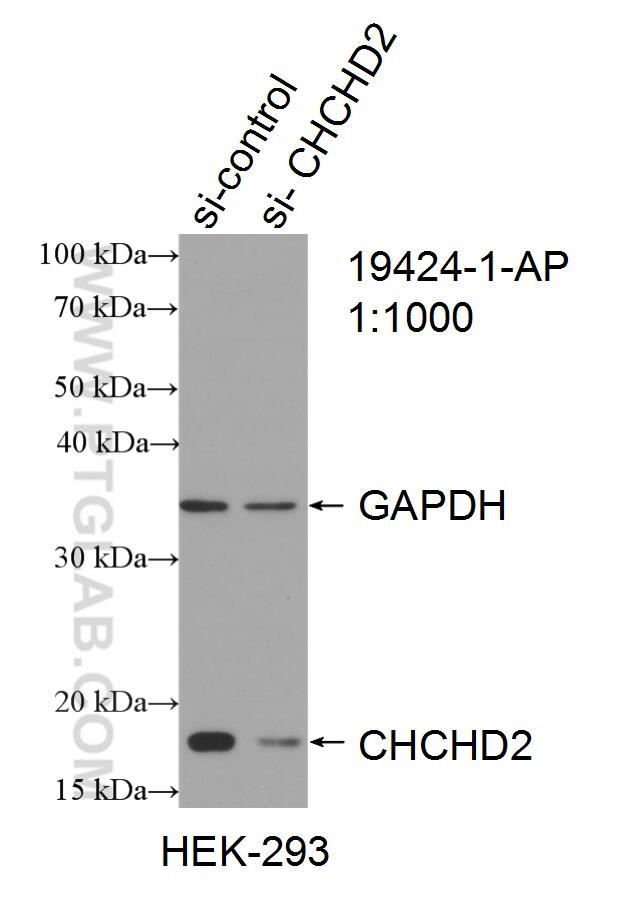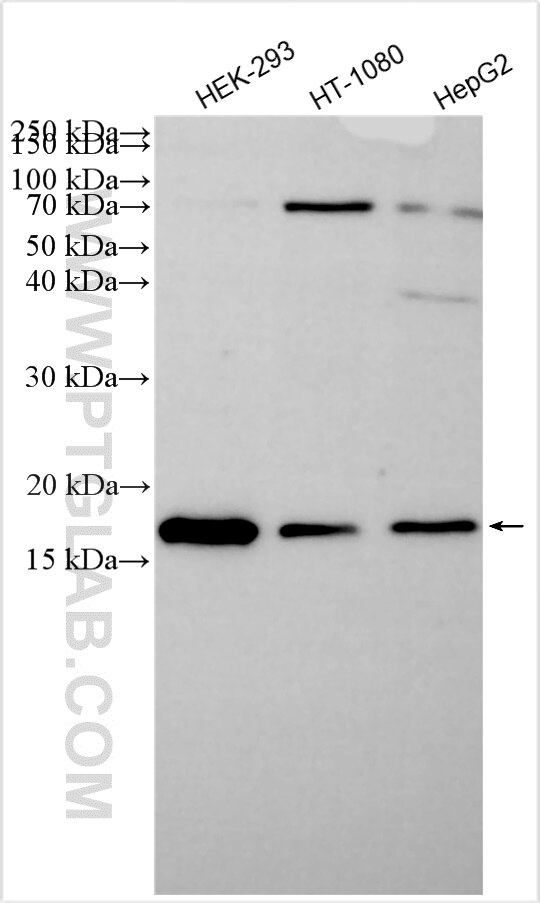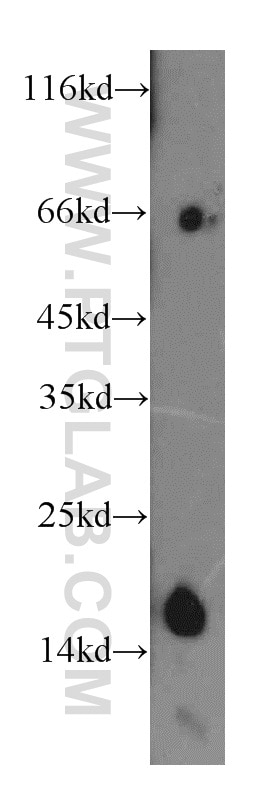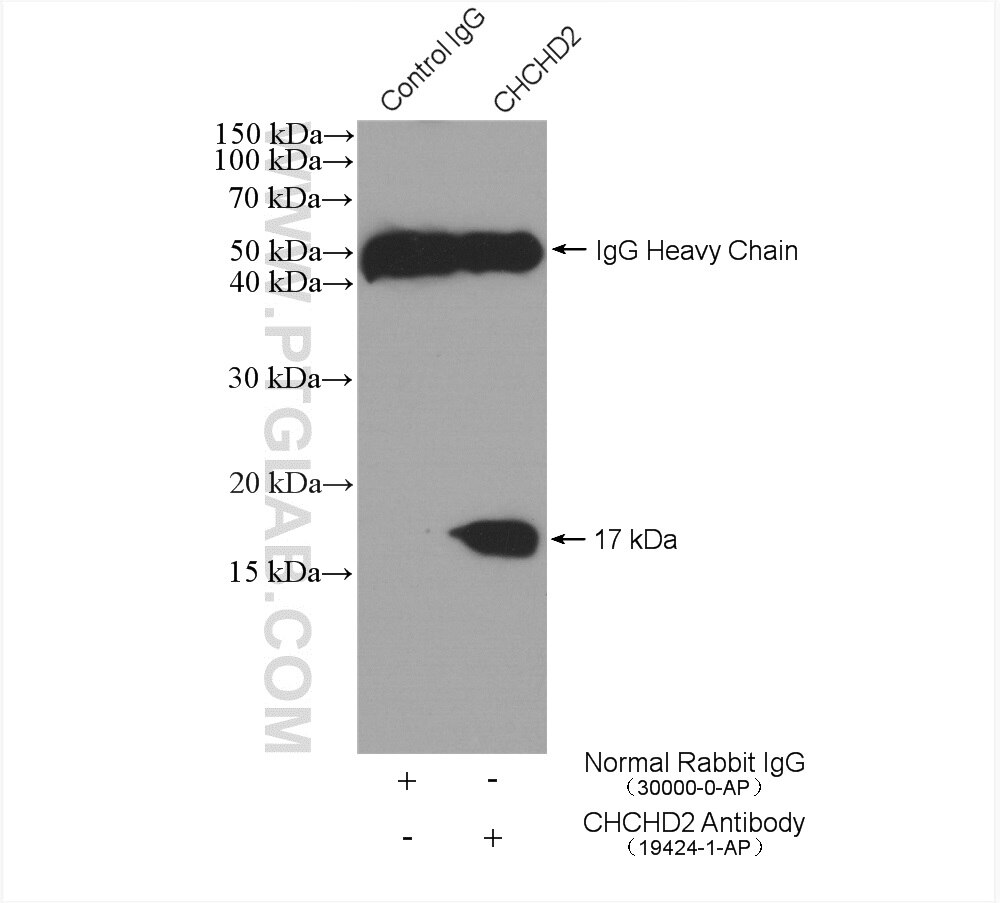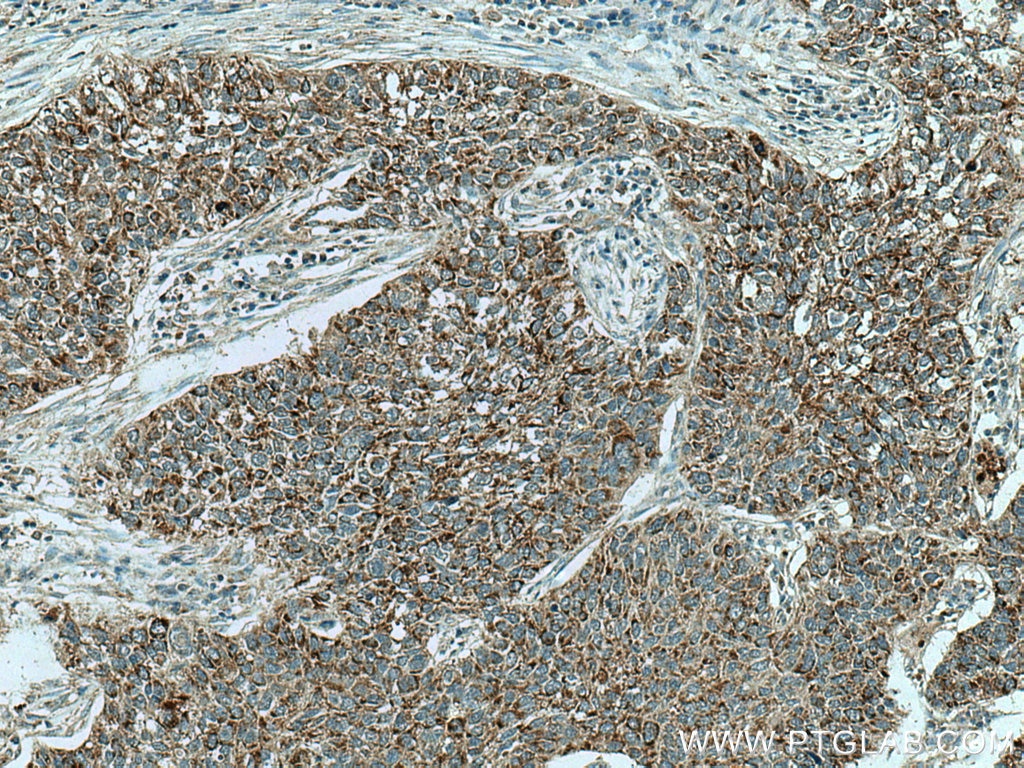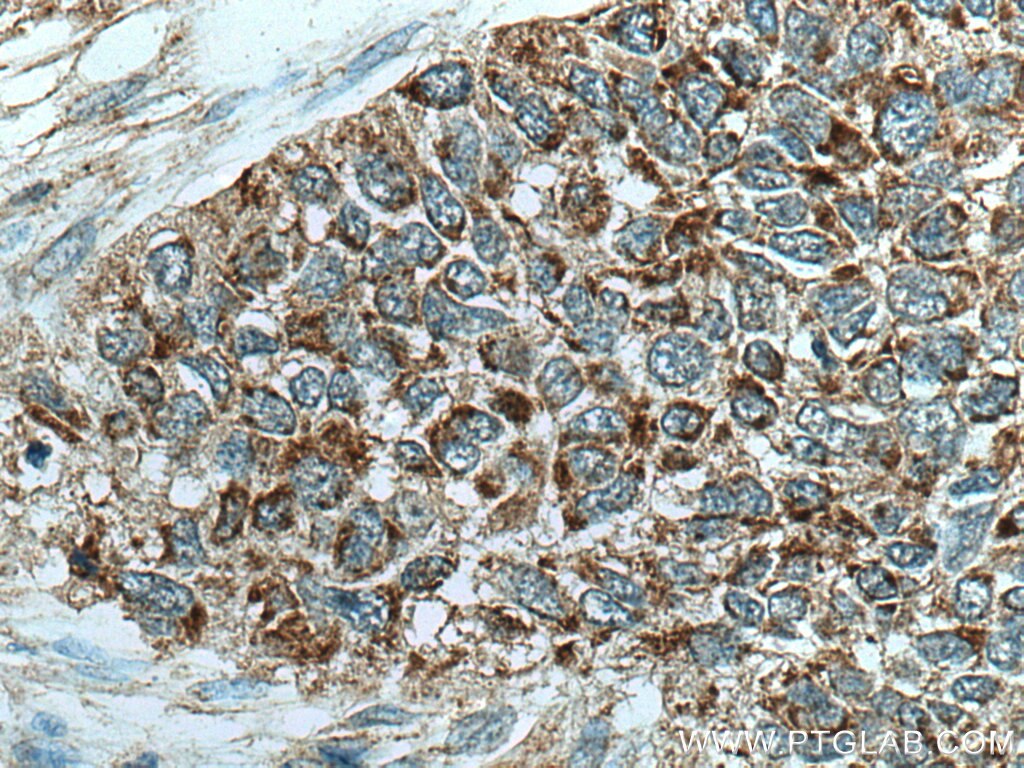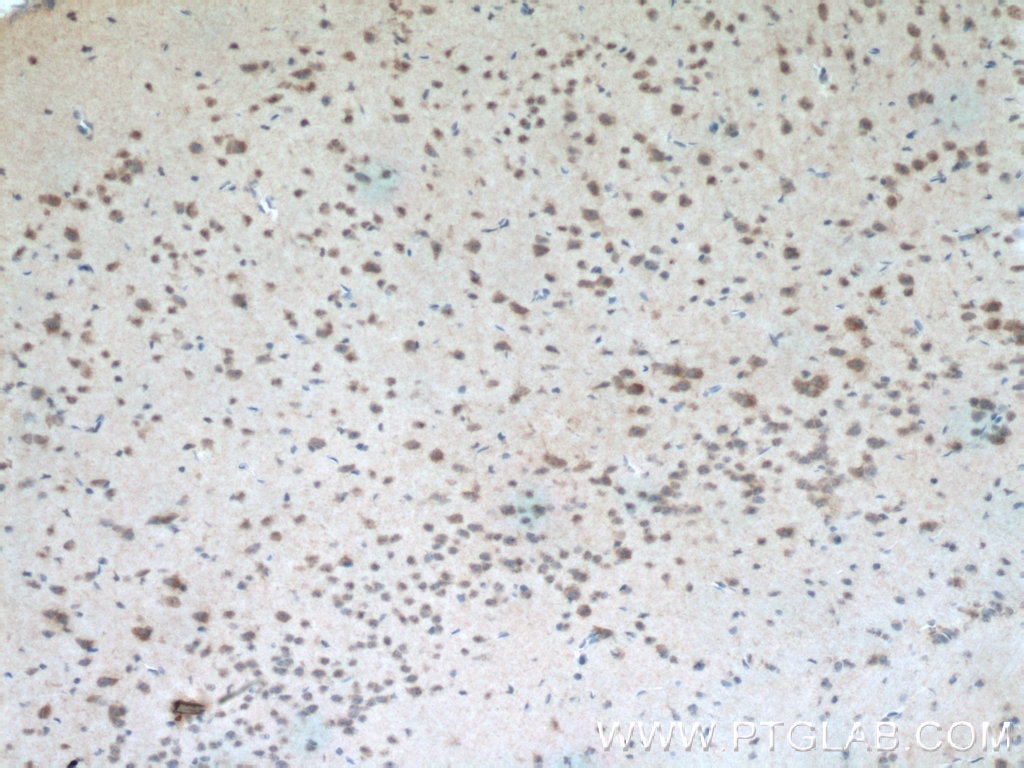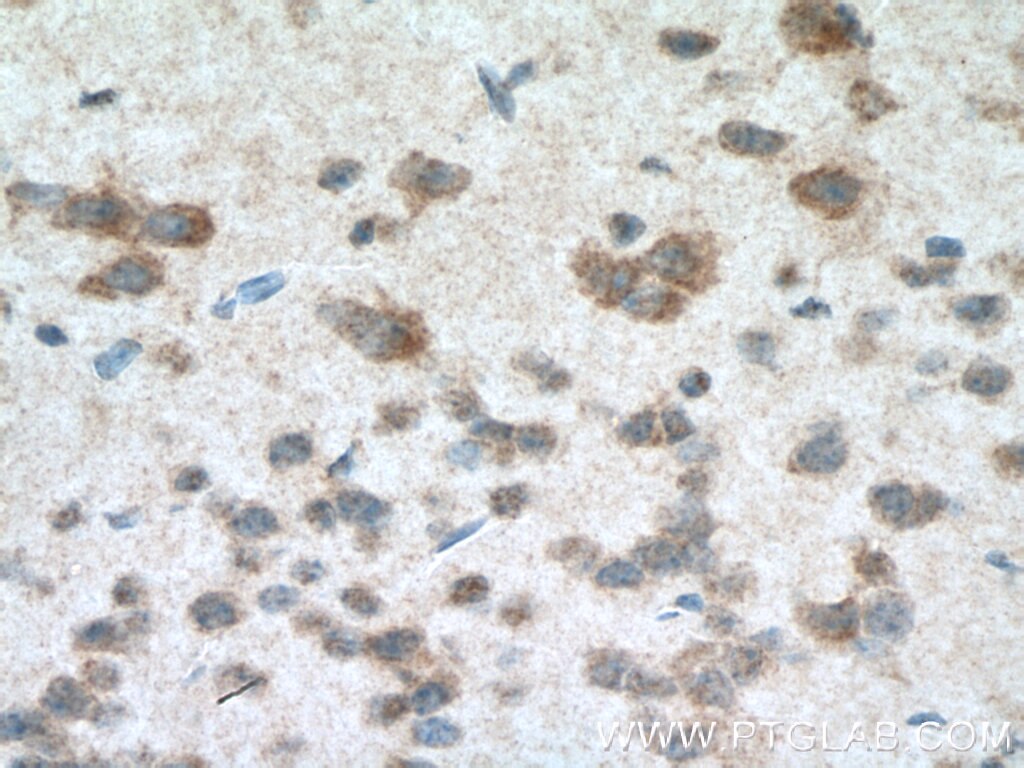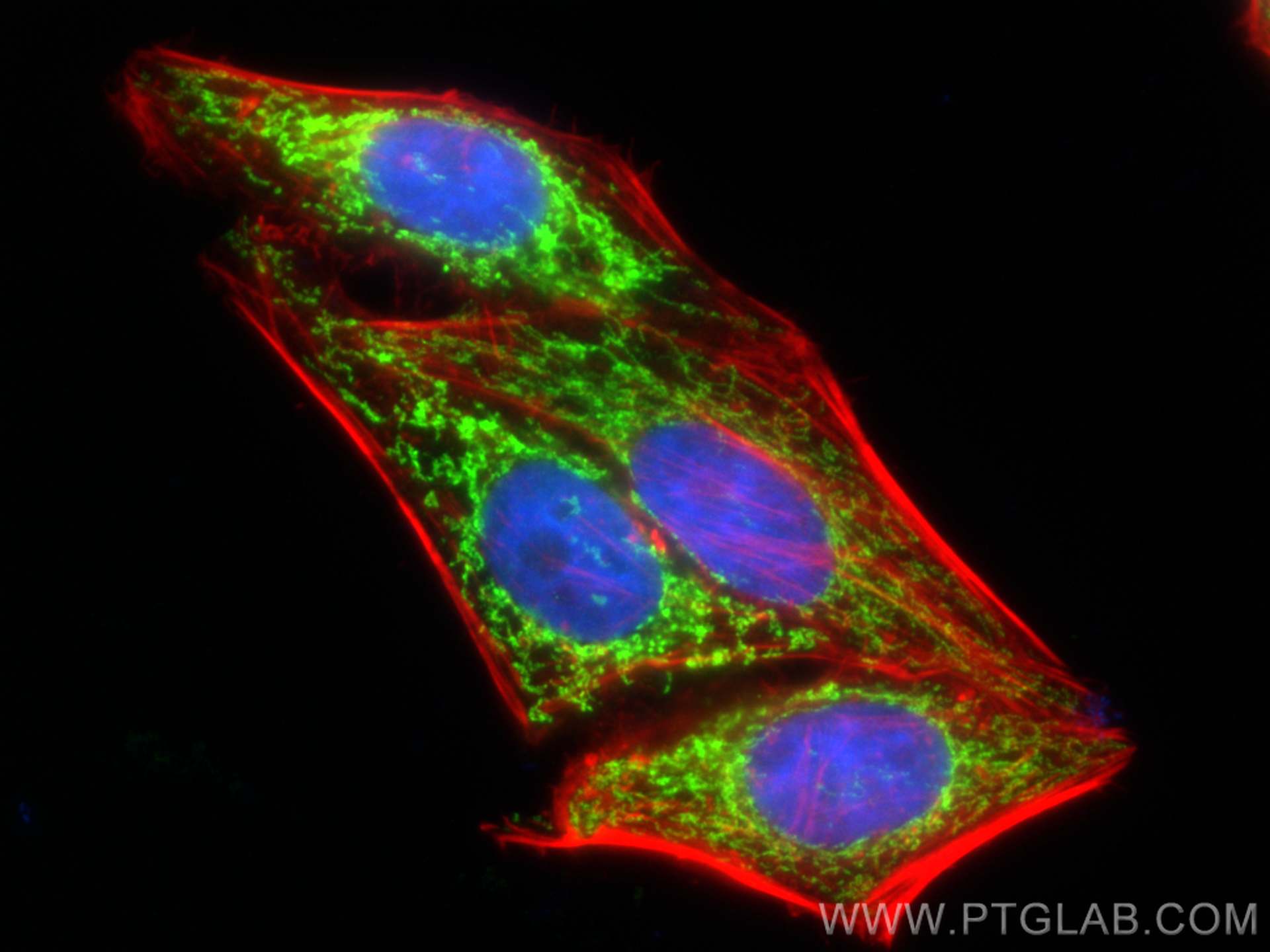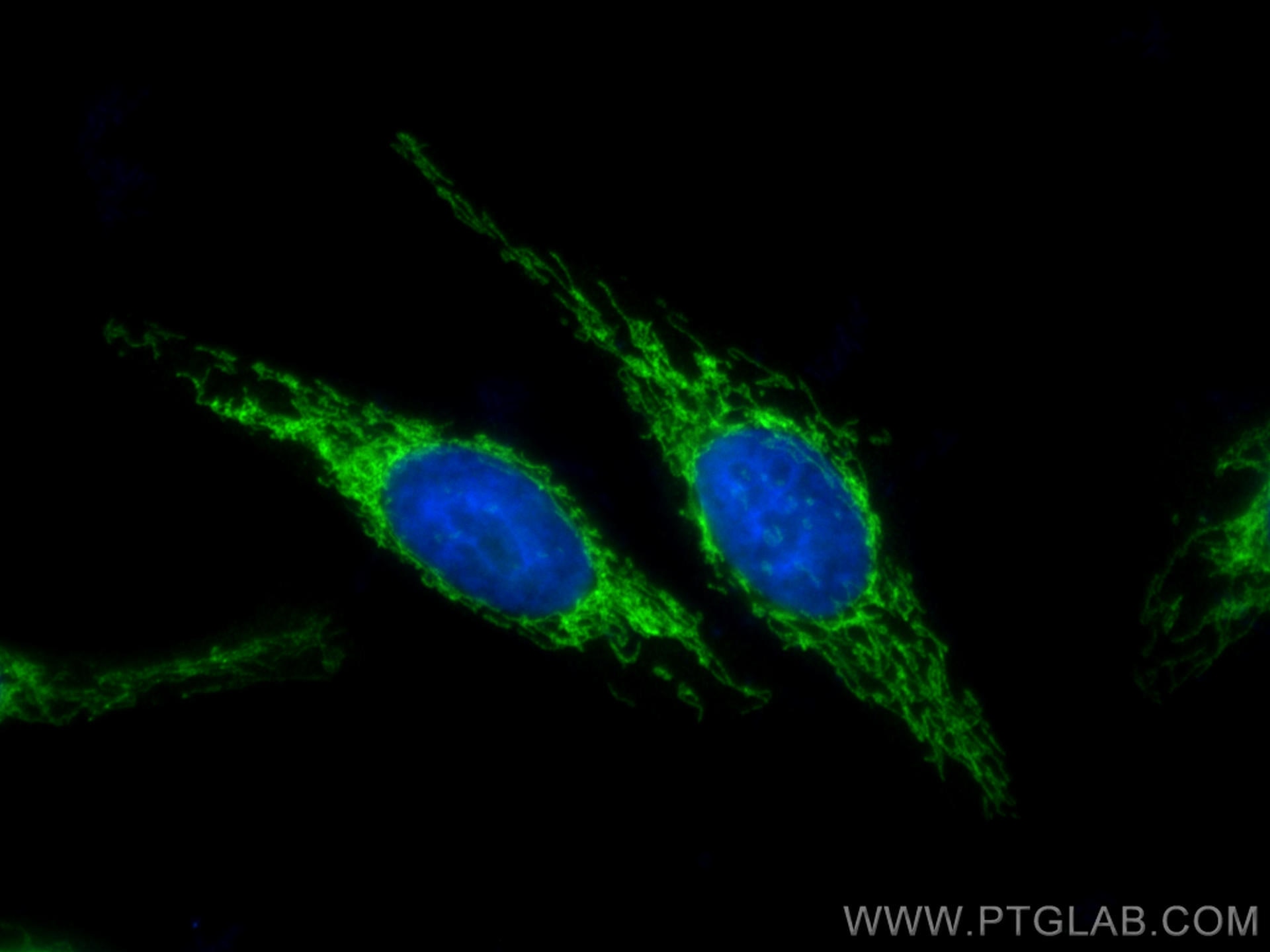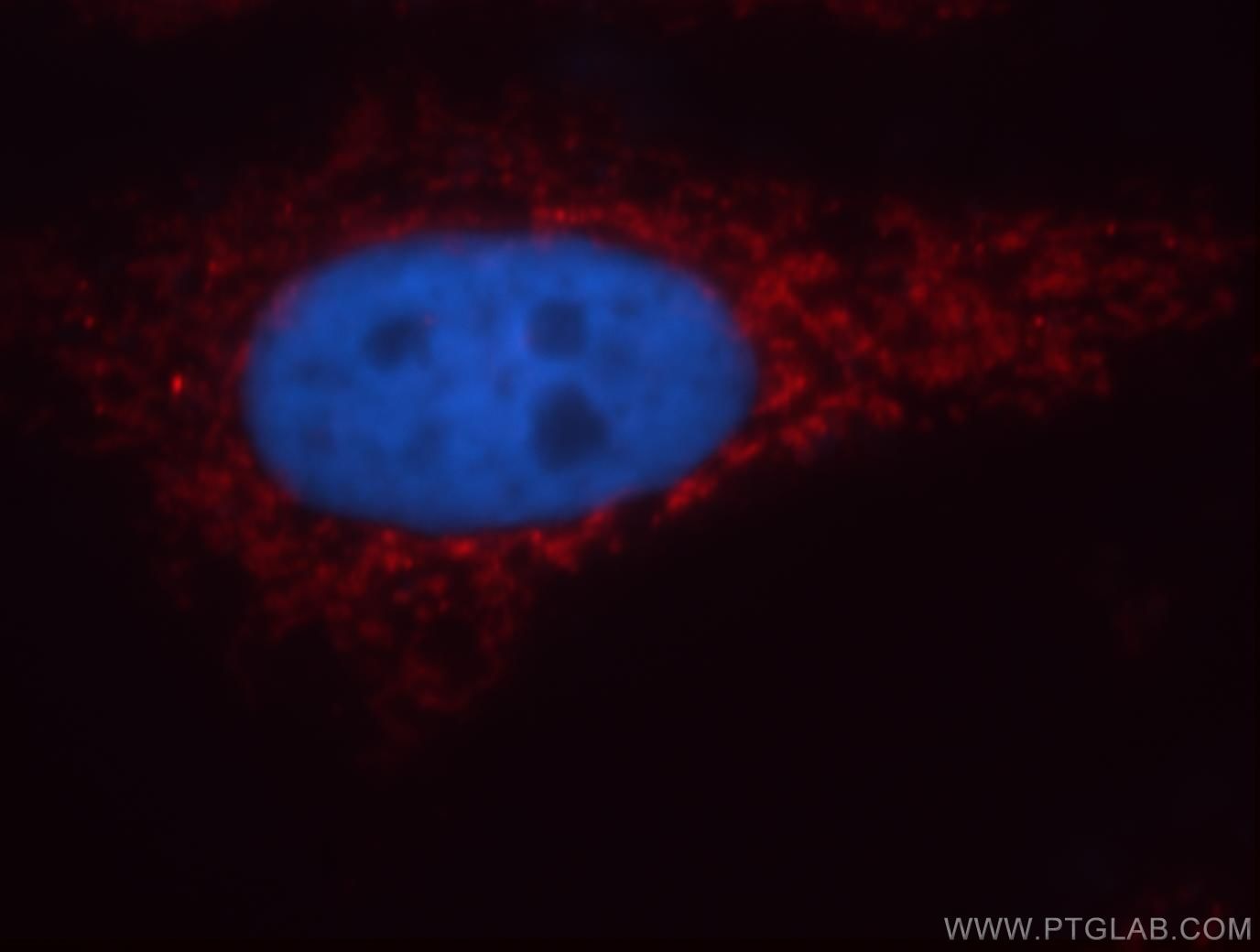- Featured Product
- KD/KO Validated
CHCHD2 Polyklonaler Antikörper
CHCHD2 Polyklonal Antikörper für WB, IHC, IF/ICC, IP, ELISA
Wirt / Isotyp
Kaninchen / IgG
Getestete Reaktivität
human, Maus und mehr (1)
Anwendung
WB, IHC, IF/ICC, IP, CoIP, ELISA
Konjugation
Unkonjugiert
Kat-Nr. : 19424-1-AP
Synonyme
Geprüfte Anwendungen
| Erfolgreiche Detektion in WB | HT-1080.Zellen, HEK-293-Zellen, HepG2-Zellen, humanes Nebennierengewebe |
| Erfolgreiche IP | HepG2-Zellen |
| Erfolgreiche Detektion in IHC | humanes Lungenkarzinomgewebe, Maushirngewebe Hinweis: Antigendemaskierung mit TE-Puffer pH 9,0 empfohlen. (*) Wahlweise kann die Antigendemaskierung auch mit Citratpuffer pH 6,0 erfolgen. |
| Erfolgreiche Detektion in IF/ICC | HepG2-Zellen |
Empfohlene Verdünnung
| Anwendung | Verdünnung |
|---|---|
| Western Blot (WB) | WB : 1:500-1:2000 |
| Immunpräzipitation (IP) | IP : 0.5-4.0 ug for 1.0-3.0 mg of total protein lysate |
| Immunhistochemie (IHC) | IHC : 1:50-1:500 |
| Immunfluoreszenz (IF)/ICC | IF/ICC : 1:200-1:800 |
| It is recommended that this reagent should be titrated in each testing system to obtain optimal results. | |
| Sample-dependent, check data in validation data gallery | |
Veröffentlichte Anwendungen
| KD/KO | See 6 publications below |
| WB | See 38 publications below |
| IHC | See 3 publications below |
| IF | See 9 publications below |
| CoIP | See 2 publications below |
Produktinformation
19424-1-AP bindet in WB, IHC, IF/ICC, IP, CoIP, ELISA CHCHD2 und zeigt Reaktivität mit human, Maus
| Getestete Reaktivität | human, Maus |
| In Publikationen genannte Reaktivität | human, drosophila, Maus |
| Wirt / Isotyp | Kaninchen / IgG |
| Klonalität | Polyklonal |
| Typ | Antikörper |
| Immunogen | CHCHD2 fusion protein Ag13752 |
| Vollständiger Name | coiled-coil-helix-coiled-coil-helix domain containing 2 |
| Berechnetes Molekulargewicht | 151 aa, 16 kDa |
| Beobachtetes Molekulargewicht | 16-18 kDa |
| GenBank-Zugangsnummer | BC003079 |
| Gene symbol | CHCHD2 |
| Gene ID (NCBI) | 51142 |
| Konjugation | Unkonjugiert |
| Form | Liquid |
| Reinigungsmethode | Antigen-Affinitätsreinigung |
| Lagerungspuffer | PBS with 0.02% sodium azide and 50% glycerol |
| Lagerungsbedingungen | Bei -20°C lagern. Nach dem Versand ein Jahr lang stabil Aliquotieren ist bei -20oC Lagerung nicht notwendig. 20ul Größen enthalten 0,1% BSA. |
Hintergrundinformationen
CHCHD2 is a widely expressed 16.7-kDa mitochondrion-localized protein. CHCHD2 contains a C-terminal CHCH (coiled-coil helix coiled-coil helix) domain. Mutations in CHCHD2 gene have been reported in autosomal dominant Parkinson's disease (ADPD). CHCHD2 is a bi-organellar mediator of oxidative phosphorylation, playing crucial roles in regulating electron flow in the mitochondrial electron transport chain and acting as a nuclear transcription factor for a cytochrome c oxidase subunit (COX4I2) and itself in response to hypoxic stress. CHCHD2 also regulates cell migration and differentiation, mitochondrial cristae structure, and apoptosis (PMID: 33967741).
Protokolle
| PRODUKTSPEZIFISCHE PROTOKOLLE | |
|---|---|
| WB protocol for CHCHD2 antibody 19424-1-AP | Protokoll herunterladen |
| IHC protocol for CHCHD2 antibody 19424-1-AP | Protokoll herunterladenl |
| IF protocol for CHCHD2 antibody 19424-1-AP | Protokoll herunterladen |
| IP protocol for CHCHD2 antibody 19424-1-AP | Protokoll herunterladen |
| STANDARD-PROTOKOLLE | |
|---|---|
| Klicken Sie hier, um unsere Standardprotokolle anzuzeigen |
Publikationen
| Species | Application | Title |
|---|---|---|
Lancet Neurol CHCHD2 mutations in autosomal dominant late-onset Parkinson's disease: a genome-wide linkage and sequencing study. | ||
Nat Commun Loss of Parkinson's disease-associated protein CHCHD2 affects mitochondrial crista structure and destabilizes cytochrome c. | ||
Nat Commun TDP-43 and PINK1 mediate CHCHD10S59L mutation-induced defects in Drosophila and in vitro. | ||
J Biomed Sci Genetic and pharmacologic p32-inhibition rescue CHCHD2-linked Parkinson's disease phenotypes in vivo and in cell models | ||
Proc Natl Acad Sci U S A Mitochondrial Nuclear Retrograde Regulator 1 (MNRR1) rescues the cellular phenotype of MELAS by inducing homeostatic mechanisms. | ||
Cell Death Dis CHCHD2 rescues the mitochondrial dysfunction in iPSC-derived neurons from patient with Mohr-Tranebjaerg syndrome |
